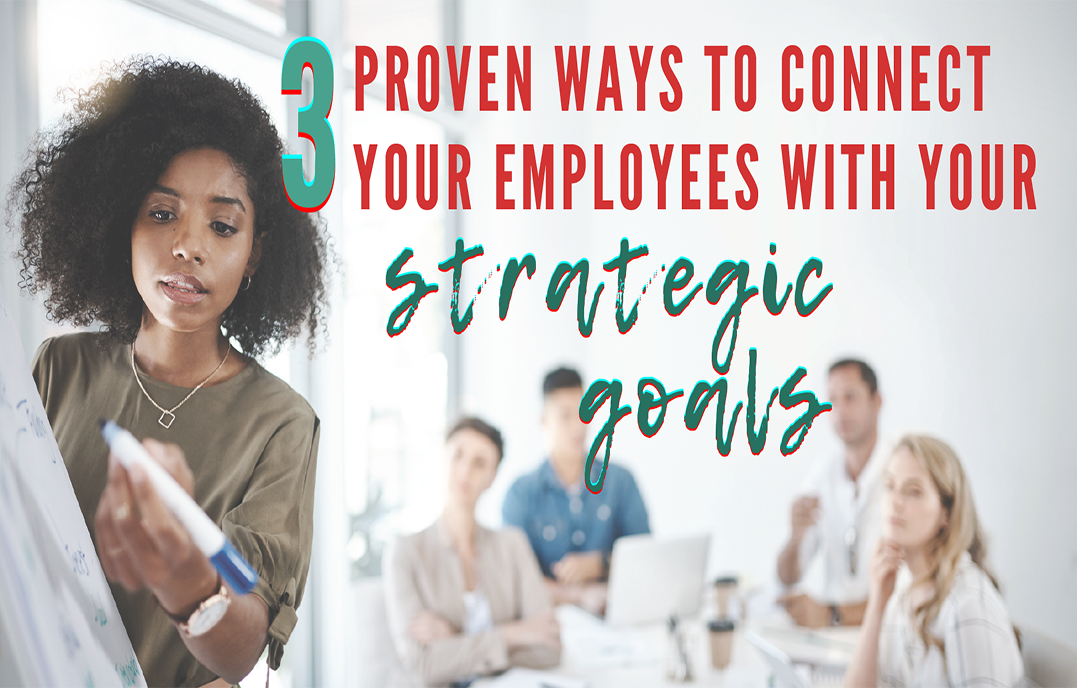This is the time of the year when most organizations go into strategic planning mode. Senior executives gather for an annual planning summit. They look at external factors such as economic, competitor, and market data. They compare the strengths and weaknesses of their organizations with external opportunities and threats. They make decisions about what adjustments to make to services or products, how to reach new markets, and ways to generate higher profits.
Then what?
Unfortunately, most strategic plans sit in a 3-ring binder on a shelf collecting dust, or get saved in a digital file on one person’s hard drive, until it’s time to work on next year’s plan. It’s not much more than a theory, really. The sooner you can connect your strategic objectives with employee goals and rewards, the better chance you have of turning that theory into reality.
Here are three proven ways to move from strategic planning to strategy execution:
Break it down.
Many strategic plans focus primarily on financial metrics. Most employees don’t connect on a day to day basis with metrics like operating margins, cost of goods sold, and net profit. They don’t see how making a decision about how to handle a customer leads to achieving a desired profit margin. And when employees do get to see key performance metrics, the gap between when their performance occurred and the metrics is far too great to have any real meaning.
What kinds of metrics help people connect? Things like improving customer satisfaction, speeding up response times, reducing waste – just about anything that ties directly to the tasks they perform on a daily basis. When employees can see what winning looks like in ways they can relate to, they make better decisions in support of the plan.
Monitor progress.
Throw out the old paradigm of the annual Performance Review. That pattern traditionally goes like this: set goals, file goals, pull goals out after 12 months, beat employee about the head for not achieving goals. Instead, change the annual performance review process to one of continuous review and adjustment throughout the year. Why? You don’t want to save up negative feedback until the employee fails. Employee failure means organizational failure.
Link performance to rewards.
Employees should feel that when the organization has been successful, they share in the rewards. Conversely, when the organization has been unsuccessful, they should feel some of the pain. Incentive and reward systems should link directly to organizational and individual performance. Don’t be afraid to move all employee performance reviews to coincide with the release of annual performance results.
Strategy execution happens with true goal alignment from top to bottom, regular monitoring of progress, and linking individual incentives with organizational performance. Help your employees move from obliged to engaged to turn your strategy into reality.
Here’s a short parable to summarize the importance of true goal alignment:
There once was a Pharaoh who went out to inspect the progress of two pyramids. The first pyramid was a mess! The blocks were uneven, the ramps were unstable, oxen were milling about… The Pharaoh stopped a nearby worker and asked, “What is your job?” The worker replied, “I move stones from this pile to that pile all day.” At the next pyramid, the Pharaoh saw much greater progress. The blocks fit together perfectly. Teams of oxen were moving evenly up the ramps. This pyramid was really taking shape. When the Pharaoh asked a worker, “What is your job?” the worker replied, “I am building a pyramid!”
Bonus! Download our simple, FREE strategic planning template here – a framework to help you measure organizational performance beyond key financial metrics.
Question: How deep into your org chart do employees connect with the organization’s strategic goals?




